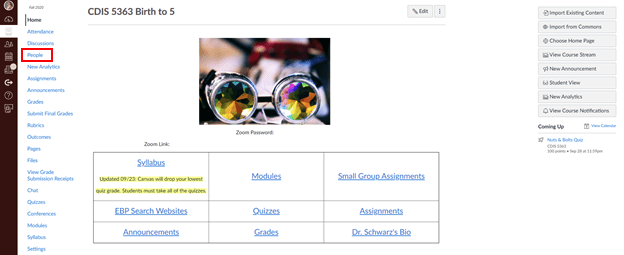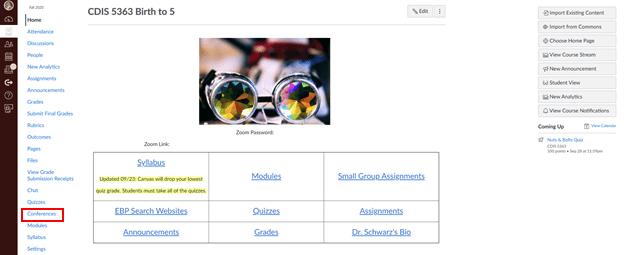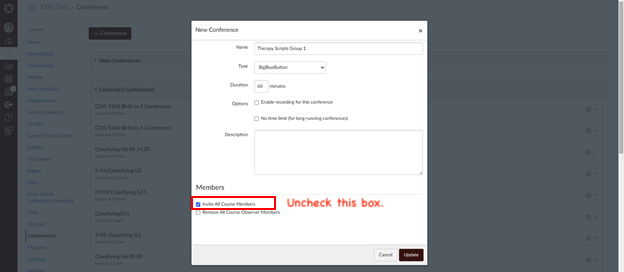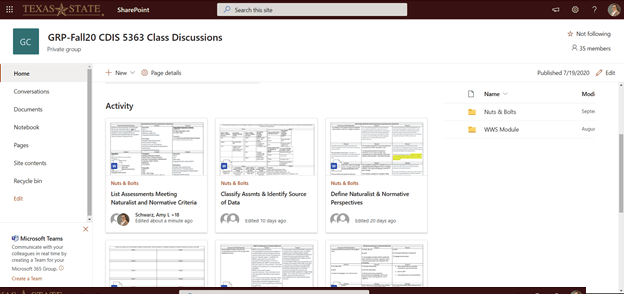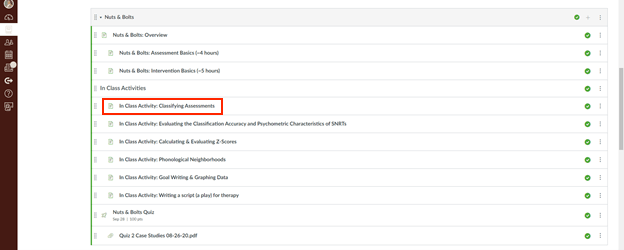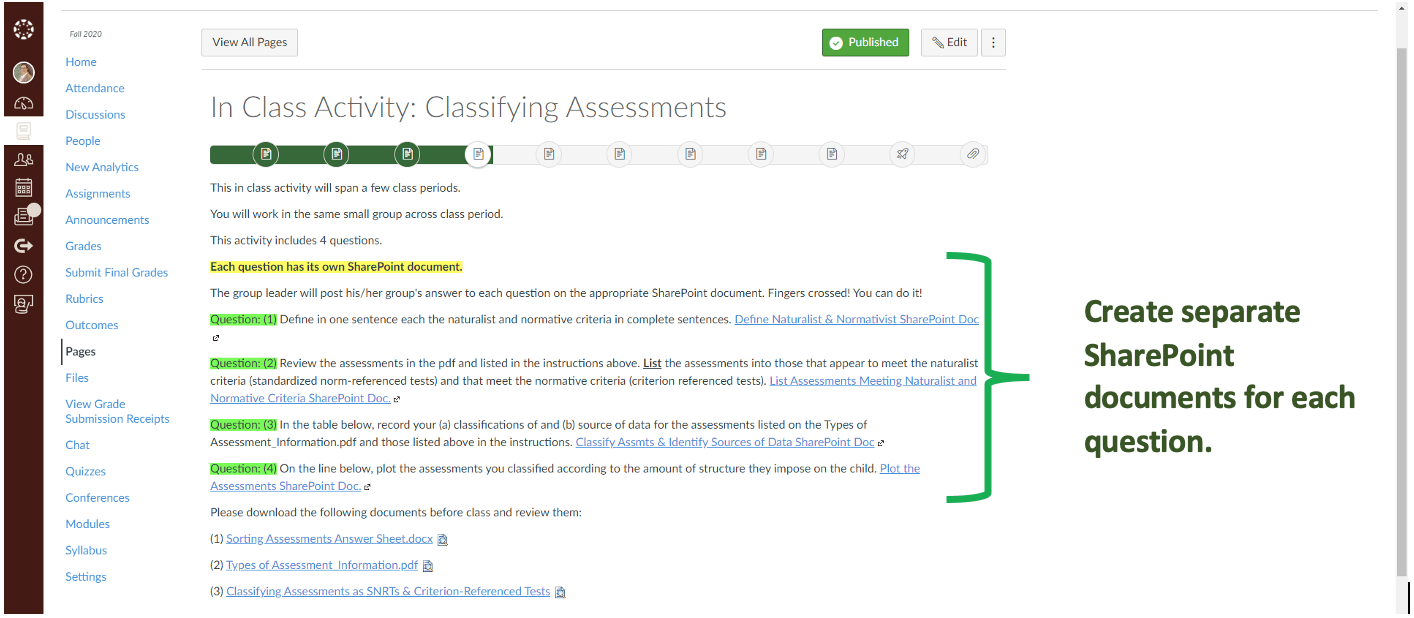Snapshot
Your name, title, etc.: Amy Louise Schwarz, PhD, CCC-SLP, Associate Professor
The school/department you teach for: Department of Communication Disorders
Discipline: Language Assessment Intervention Birth to 5 (graduate) and Augmentative Alternative Communication (undergraduate – senior level)
Class size: 34 to 45
Anything else you think we should know about what and how you are teaching:
My classes are taught face-to-face, and I have several students participating simultaneously online. My graduate class is a flipped class, and my undergraduate course is a flipped hybrid lecture. Students work in small groups of three during class to solve clinical problems. In this blog post, I feature the graduate class.
Tip #1: Groups
For small group work on each major topic, I use Canvas to randomly create 11 groups of students with a group leader also randomly assigned. To do this, I go to the People tab.
Each group leader creates a conference in Canvas for only his/her group.
When they create a conference in Canvas, they need to uncheck the “Invite All Course Members” box and just select the people in their group. You can also do this for them. A few of the seniors in my other course have struggled with this a bit. So, you may want to make the conferences for them. Personally, I prefer that they work this out on their own, so they become more independent.
Students only use the chat function in Canvas conferences to communicate. Although I have tried discussion groups in Canvas and video conferencing in Zoom as alternatives, these latter options resulted in technical issues, frustration, and loss of instructional time.
Students work in their small groups using chat to exchange ideas on how to solve a clinical problem. Then the group leader posts his/her group’s solution to a Microsoft Word document in SharePoint. So, I had to first create a SharePoint site for the class.
I have added each student to the SharePoint course site. It took too much time to assign group leaders to a particular document. Instead, I just click the Share button (upper right-hand corner of the screen), select “anyone at TXST with the link”, and then paste the link into the Canvas page (see below).
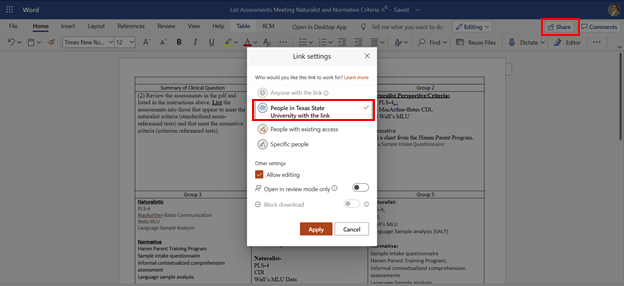
Figure 6 Select your viewing and editing permissions carefully when choosing how to share documents and files in SharePoint.
Then I create a page in Canvas with the in-class activities for a particular topic. I add that page to a Module in Canvas.
Students can access a particular SharePoint document at the same time. I format the document as a table with each group number as one cell. Then, when we reconvene as a class to discuss each group’s solution, the information is already organized for me. I can quickly scan each group’s answer for (a) similarities and differences, (b) areas of confusion, and (c) areas of creative and original thinking.
Notice that I have uploaded to SharePoint a separate Microsoft Word document for each question. This is important. One time, I tried to save time and just use the same SharePoint document by deleting their answers from the table. The SharePoint site for my class temporarily shut down. So, it is very important to create a separate SharePoint document for each activity.
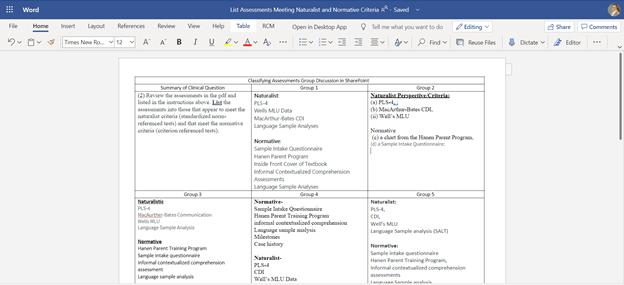 Figure 9 Shared document showing group project table.
Figure 9 Shared document showing group project table.
I hope you find this helpful. Go Bobcats!! Amy Louise
